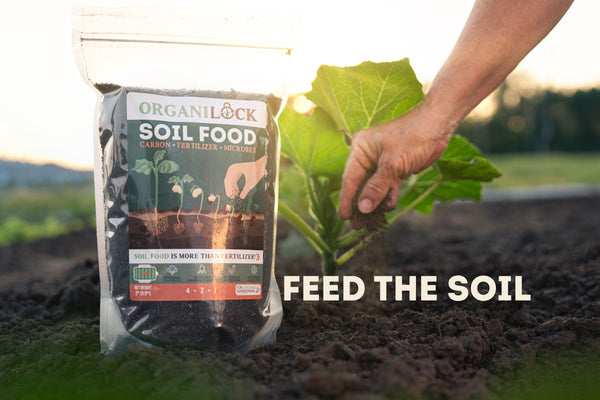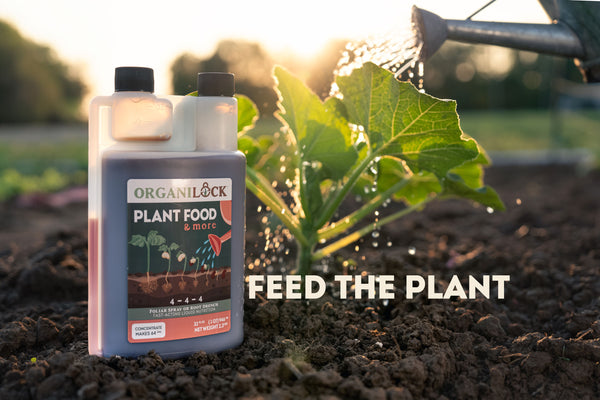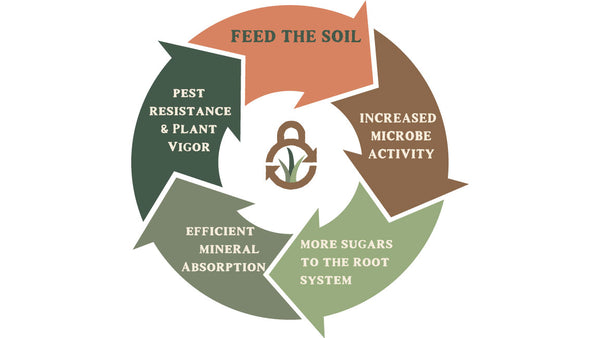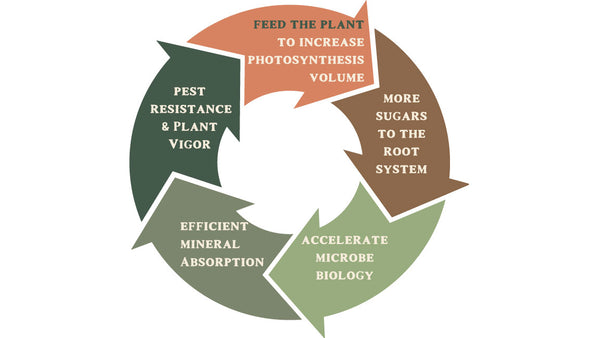OrganiLock Explained
The Company
Step into the future of truly sustainable soil health with OrganiLock! In a world grappling with soil crisis and environmental challenges, making a conscious decision to nourish soils lays the groundwork for a more robust and resilient agricultural system - and planet.
Did you know that nearly 9% of US farm animals never make it to processing. That's a vast reserve of organic nitrogen and other essential nutrients going to waste. At OrganiLock, we tap into this neglected resource, transforming animal mortality into a potent, renewable solution for soil nutrition.
We merge age-old wisdom with cutting-edge technology, creating a circular life cycle where animals enrich the soil, soil feeds plants, plants feed animals, and animals enrich the soil again. Our patent-pending process and innovative machinery reincorporate animal mortality back into this cycle, unveiling a powerful tool for rejuvenating our planet's soil.
While traditional methods like composting can have their place, the urgency of our situation demands more. We need swift, scalable solutions - and that's exactly what OrganiLock delivers. By making the conscious decision to nourish our soils, we're not just fueling plant growth - we're laying the groundwork for a more robust and resilient agricultural system. This is about more than feeding the world today; it's about regenerating our soils for a healthier, more abundant tomorrow.
With OrganiLock, you're investing in a solution that not only meets the demands of the present but also safeguards the future of our planet. Let's cultivate a better world, one where sustainable farming isn't just an option, but the norm. Together, we can make this vision a reality!
The Products
OrganiLock Holds A Steadfast Belief:
The Solution:

We know that soil is home to a host of living organisms that are needed for healthy soil to exist.
We also know all living organisms need fuel to survive and hopefully thrive! Not all the organisms in the soil do the same job.
Some microbes function as fuel breakdown engines – while most others use that digested fuel to work in harmony with root structures to create healthy plants.
The regenerative soil movement recognizes the need for biodiversity, but when it comes to productive solutions and applications, the results are mediocre at best.
A rapid and robust solution to soil regeneration is needed, and new technology to accomplish it.
New technology must supplement or replace synthetic nitrates. To do this, a significant source of organic nitrogen and other minerals that are renewable, available, and affordable are required.
Our historical records indicate that by the early 1900s, we faced a shortage of organic nutrients to nourish our farms when the global population was merely 1 billion. Fast forward to today, with a population of 8 billion, the question looms:
Where will we source those nutrients, now?...120 years later?
A nod to techniques of antiquity is necessary:
OrganiLock asserts that animal mortality represents an untapped resource pool of organic nutrients. We are leveraging this substantial, available, renewable, pre-distributed, and cost-effective solution to give growers access to sustainable and affordable organic nutrients.
Soil Food is comprised of 4 key ingredients:
The Solution Is Simple: Feed The Soil
Feeding the soil requires the feeding of the primary nutrient processors. These mini processors need a diet of organic nitrogen and carbon (just like a compost pile). For our purposes, these processors are tools to process concentrated food into a form the rest of the biosphere needs to thrive.
 OrganiLock has created a unique Soil Food designed to feed the primary nutrient processors called saprophytic fungi. Once activated with water, soils inoculated with Soil Food bloom with hyphae - the vegetative branches of the good fungi in the soil. Within 24-48 hours, the fungi grow and multiply throughout the soil so much and so quickly, even the soil surface can show signs of rapid regeneration.
OrganiLock has created a unique Soil Food designed to feed the primary nutrient processors called saprophytic fungi. Once activated with water, soils inoculated with Soil Food bloom with hyphae - the vegetative branches of the good fungi in the soil. Within 24-48 hours, the fungi grow and multiply throughout the soil so much and so quickly, even the soil surface can show signs of rapid regeneration.
The Results
2023 Trial Results Summary
Vegetables:
Compared yields of plots with Soil Food (pellets) vs 10-10-10 synthetic (dry granular). Single, in-ground application of both.
Soybeans:
8 acres, fertilized with broadcast Soil Food pellets pre-planting, then sprayed with Plant Food mid-growth. Only OrganiLock nutrients and herbicide were applied.
Soil Food Yield:
Conventional Yield:
OrganiLock Soil Food
“Soil Food” refers to a combination of organic materials or substances that serve as a nutrient source for microorganisms.
Applications
Soil Food is a versatile product. Produced in two configurations (pelleted and powder), it can feed soil or soilless media in virtually all scenarios:
Electrical Conductivity (EC) Meter
Soil food is very concentrated, so it is important that you know how much to apply. We measure this using an EC meter.
An Electrical Conductivity (EC) meter, also known as a conductivity meter, is a device used in agriculture to measure the electrical conductivity of a solution.
Electrical conductivity is an indicator of the concentration of dissolved salts, ions, or nutrients in a liquid, including the nutrient concentration in soil or hydroponic solutions.
When mixing Soil Food in your soil/media, we recommend the range should be .3 to 1.0 depending on the needs of your plants.
See our training video on how to use an EC meter when using OrganiLock Soil Food.
Things To Note
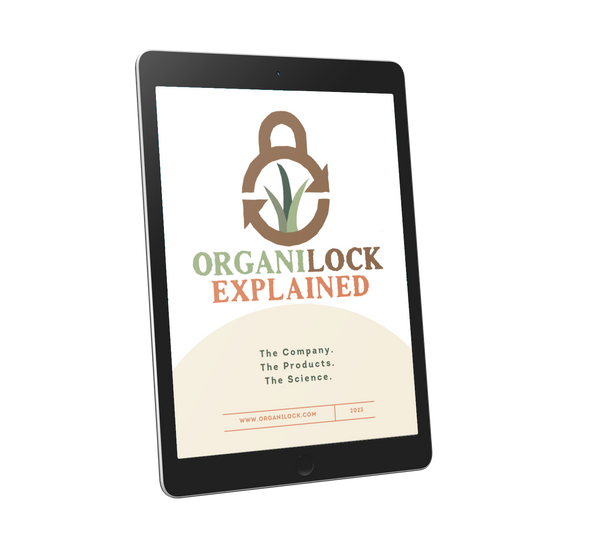
Want All This Info In A Shareable Format?
We've compiled this into a print & share friendly PDF just for you!


